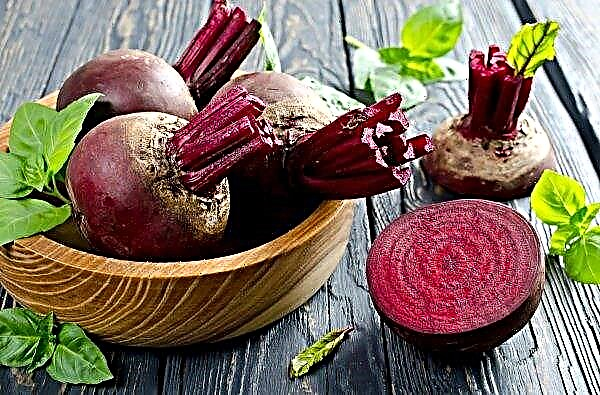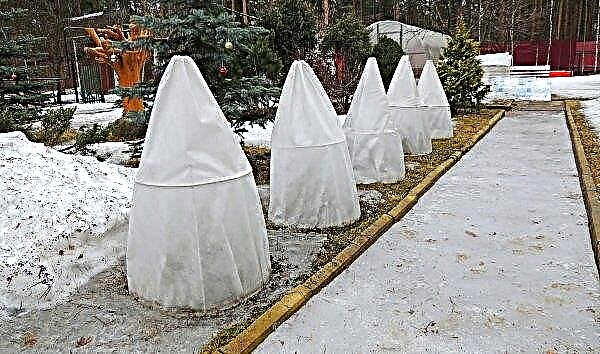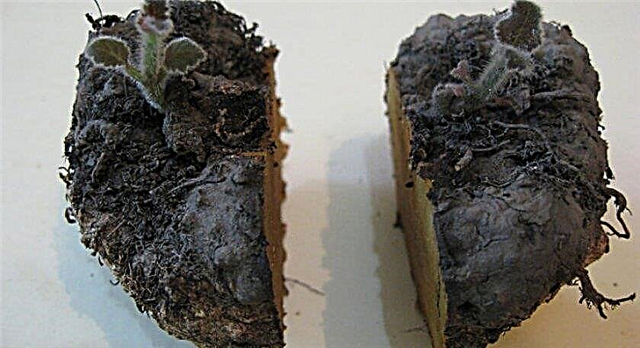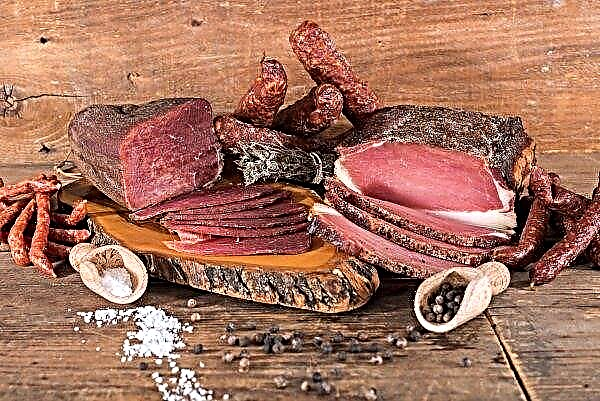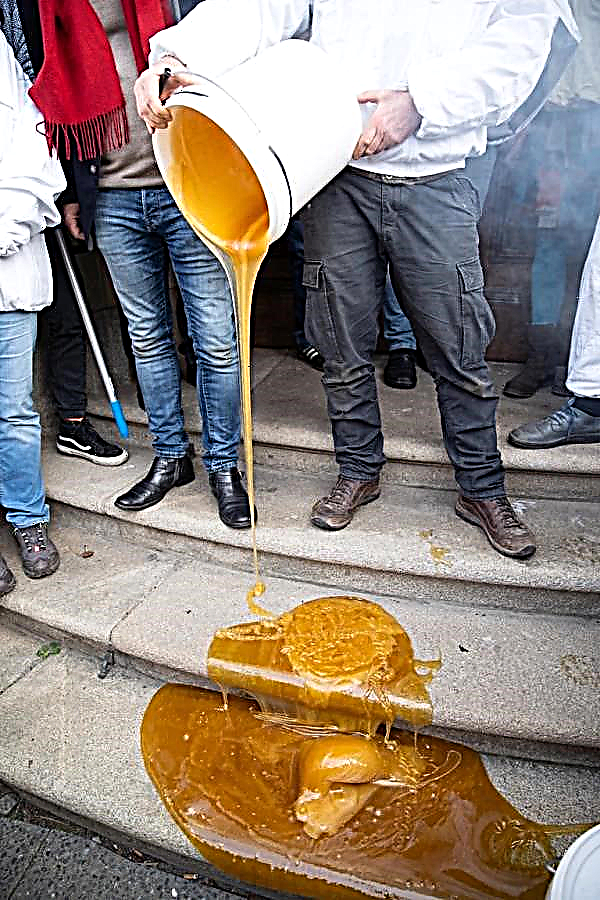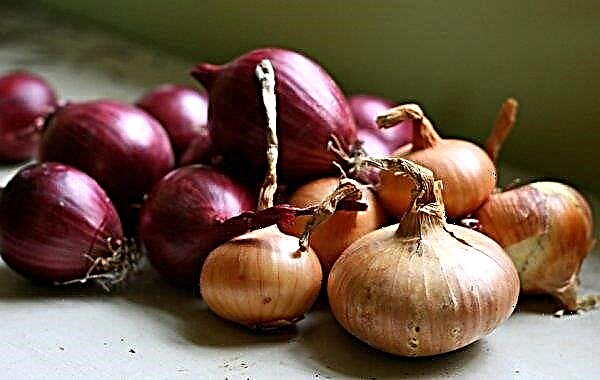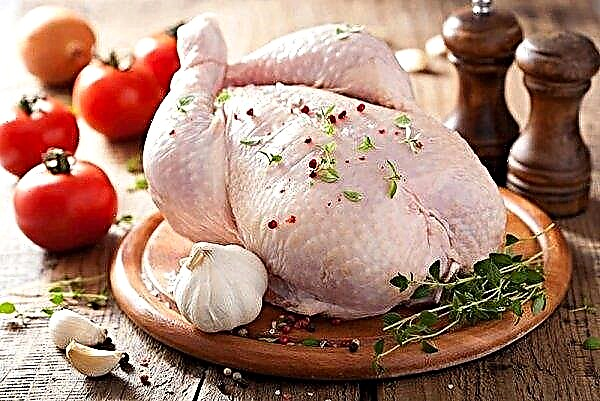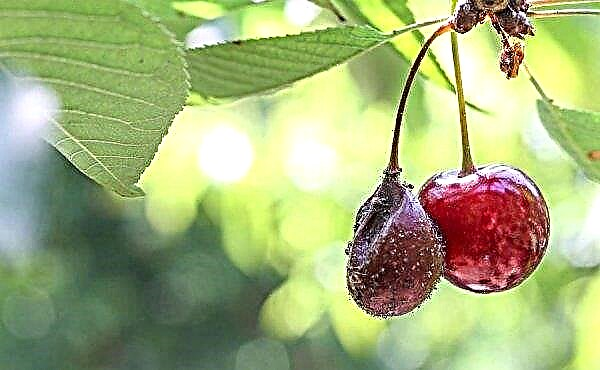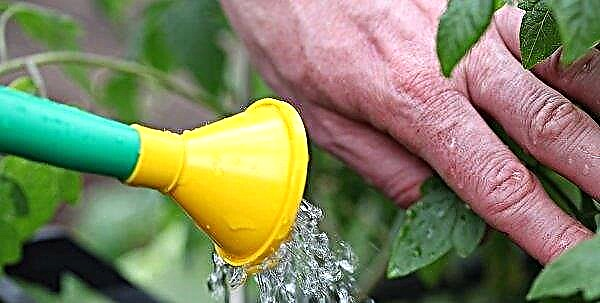Confusing juniper (heather) with heather is quite difficult. After all, the first plant is an evergreen coniferous shrub, and the second refers to flowering plants from the heather family. And they grow in different zones. Read more about how these two plants differ, read further in the material.
Heather and Juniper: the same or not
Juniper (lat. Juníperus) is a coniferous tree or shrub. This is the name of a whole genus in which there are 75 species of plants. Among them: juniper Cossack, Mexican, Bermuda, ordinary, prickly, western, lying, thick-billed, woody, cedar, Chinese, East African and many others. This genus belongs to the cypress family (Cupressaceae), the coniferous department.
The name "heather" is one of the synonymous names for common juniper. And it is very consonant with the name of another plant - “heather”, which causes confusion. Although these plants are not even relatives, and the difference between them is quite significant.
Important! Juniper ordinary is able to purify the air almost to a sterile state, so it is planted in medical institutions to clean and improve the space.
Heather (lat.Calluna) is also the name of the genus. It combines a number of small shrubs with pink or white flowers that usually grow in rocky terrain. They are similar to juniper only in that both are evergreen. This genus belongs to the heather family (Ericaceae), the flowering department.
Botanical Description
Heather is widespread in Western Europe and Asia, North America and Greenland. This is the main plant of the wastelands of Northern and Western Europe. The shrub has purple stems, shoots with small, closely spaced leaves, spikes and bell-shaped flowers. In places protected from strong winds, it grows to 0.9 m. But where the soil receives too little moisture, the height of the plant does not exceed 10 cm.
Botanical description of heather:
- bush: evergreen;
- shoots: branching;
- leaves: small, scaly, 2-3 mm long, located in opposite pairs;
- bloom: occurs at the end of summer;
- inflorescences: umbellate or in the form of brushes, they contain from 5 to 30 flowers;
- the flowers: lilac (in wild species) and white (in garden) with cupped bracts;
- propagated: seeds.
Breeders bred garden varieties with golden or reddish needles. Some are silver gray. They can change color with the onset of cold weather, acquiring more saturated shades. The most famous varieties of this group: Beoley Crimson, Boskoop, Cuprea, Firefly, Long White.
Did you know? Purple heather — one of two national colors of Norway.
Heather is a food source for sheep and deer. They eat the softer tips of the shoots. In addition, it is used to make beer. Heather honey is a very valuable product. It is harvested in late summer. It has a characteristic intense taste and unusual texture (jelly-like).
 If you dissolve it in water, you will get syrup, which is used in the treatment of kidney and urinary tract diseases. White heather flowers in the UK are involved in bridal bouquets.
If you dissolve it in water, you will get syrup, which is used in the treatment of kidney and urinary tract diseases. White heather flowers in the UK are involved in bridal bouquets.
Did you know? Heather used to be used to dye wool yellow and to tan leather.
Heather Feature:
| Height | 10 to 90 cm |
| Crown shape | Inverted trapezoid |
| Bark | - |
| Distribution area | Northern Hemisphere (wasteland and foothills) |
| Life span | 5-10 years |
| Temperature | Moderately frost resistant |
| Lighting | Any |
| The soil | Any |
| Application | Food and Beverage, Feed for Farm Animals |
| Breeding | Seeds |
Junipers grow throughout the Northern Hemisphere, from the Arctic to tropical Africa, including in Pakistan, Tibet, and the mountains of Central America. Juniper varieties differ in size (their height can reach 40 m) and shape. Here and evergreen tall trees, and low shrubs. They can be either monoecious or dioecious.

Botanical Description:
- bumps: these are lumpy berries, which consist of connected scales and a fleshy overgrown receptacle;
- cone size: length - 4–27 mm;
- Colour: blue or blue, but there are also varieties with reddish or orange-brown berries;
- seed ripening time: 6-18 months after flowering;
- bloom: in warm climates (winter temperatures not lower than -4 ° С) juniper can bloom 2 times a year;
- shoots: with juvenile (needle-like) leaves;
- needles length: 5–25 mm;
- texture: soft in some species, prickly in others.
The dark green needles in the winter do not change their shade. Another feature of it is that when chopped, it gives off a sharp aroma. The fruits of juniper feed on birds and some animals.
Important! Doctors warn that some species of juniper are poisonous, so they are not grown in public gardens. And when going to the forest, it is advised to collect fruits only from those plants of which you are sure to be edible.
Oil is made from juniper, and medications are made on its basis that are used to treat digestive problems, urinary tract infections (UTIs), kidney stones and urinary bladder, as well as many other diseases. In cooking, the plant is used as seasoning, and in the cosmetics industry as a flavoring of detergents and cosmetics.

Juniper Feature:
| Height | 1 to 40 m |
| Crown shape | Bushy |
| Bark | Dark gray |
| Distribution area | Everywhere in the Northern Hemisphere |
| Life span | Under 60 years old |
| Temperature | Moderately frost resistant |
| Lighting | Any |
| The soil | Any |
| Application | Decorative and applied |
| Breeding | Seeds, cuttings |
As you can see, there are a lot of differences between heather (common juniper) and heather. But both plants have many beneficial properties. And you can always use them to improve your family and decorate the garden.

